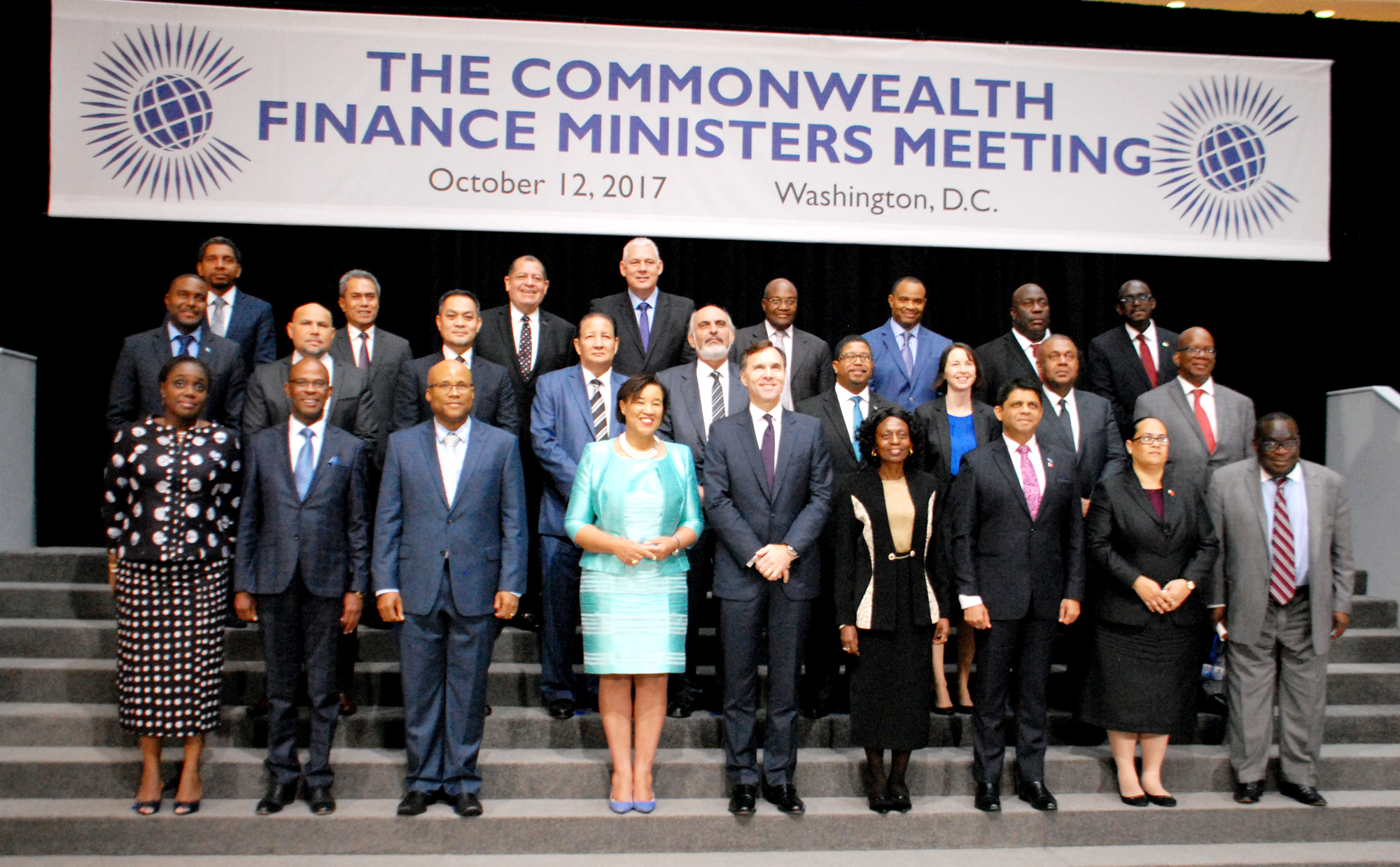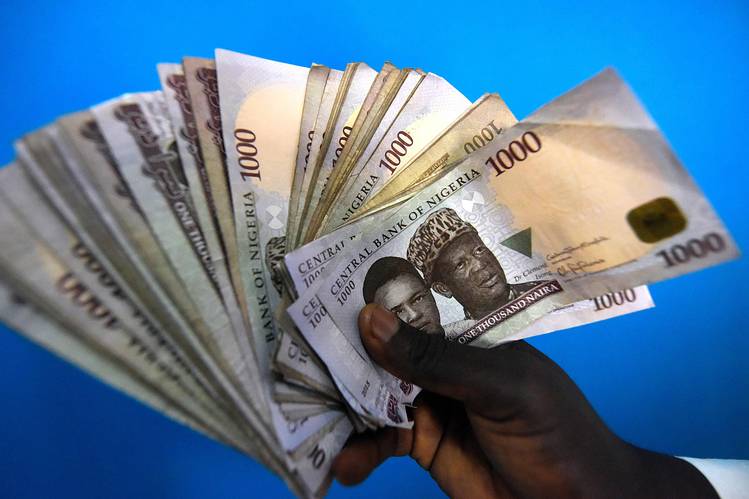
Nigeria’s Minister of Finance, Mrs. Kemi Adeosun (left) in a group photograph with fellow Commonwealth Ministers of Finance, during the Finance Ministers’ Meeting at the 2017 Annual Meetings of the IMF-World Bank in Washington D.C. on Thursday, 12th October, 2017.
The Banker Magazine has named Cameroon Minister as Africa region Finance Minister of the year 2018. India Finance Minister was also named as global and Asia Finance Minister of the year 2018. The two are among the regional ministers that made policies which improved their various countries’ economies. The Banker said “Finance minister of the Year, Africa Alamine Ousmane Mey, Cameroon
Cameroon’s finance minister, Alamine Ousmane Mey, joined the cabinet in 2011 following a year in which the country’s economy grew by a disappointing 3.3%. But under his stewardship, Cameroon’s economic fortunes have improved considerably. Gross domestic product (GDP) growth jumped in 2012 to 4.6% before increasing further to 5.9% in 2014. This performance was largely due to an ambitious strategy of public infrastructure investment targeting key sectors of the economy, under the auspices of the finance ministry.
Falling oil prices and security threats in Cameroon’s north have since moderated this growth story; in 2016 GDP increased by 4.5%, while estimates for 2017 and 2018 put aggregate growth at about 3.7% and 4.2%, respectively. But over the medium term, the International Monetary Fund (IMF) expects things to improve with growth rates of about 5% to 5.5%. This ameliorating outlook will emerge due to the completion of key infrastructure projects including hydroelectric power plants, a deepwater port, and roads and their associated benefits for private sector development, job creation and diversification.
In June 2017, the IMF approved a $666.2m extended credit facility (ECF) for Cameroon to unlock further private sector-driven growth and buttress fiscal and external sustainability. Indeed, the finance ministry’s commitment to fiscal and structural reform is a model for the wider region. The fiscal deficit is expected to decrease from 6.1% to 3.2% for 2017, even as the country grapples with challenges to its all-important oil sector.
Meanwhile, under the draft 2018 budget the deficit is expected to shrink to 2.3%, in line with the requirements of the ECF programme. To do this, the finance ministry is accelerating revenue mobilisation by widening Cameroon’s tax base, while strictly prioritising essential public investments. In addition, encouraging reforms designed to enhance public financial management – including the introduction of limits on the use of exceptional budget procedures – have garnered IMF praise. Mr Mey’s commitment to a private sector-led growth model, coupled with an ambitious programme of structural reforms and fiscal discipline, offer an outstanding example of ministerial leadership in leaner times for Cameroon. For these reasons, and others, he is the winner of the 2018 African Finance Minister of the Year Award.
Global and Asia-Pacific Arun Jaitley, India
In 2017, India rolled out policies of historical value, including the goods and services tax (GST) and demonetisation, while enjoying record volumes of inward foreign direct investment (FDI). And although recent structural reforms hit gross domestic product (GDP) growth, India is already on track to witness a growth rebound in fiscal year 2017/18. These are the key reasons why The Banker has selected Arun Jaitley as the Finance Minister of the Year in Asia-Pacific and globally.
The GST and demonetisation policies have been contentious, complex and disruptive. Many market participants argue the full effect of these new measures is still impossible to judge. But it is certain that the implementation of such policies not even a year apart in a country that typically struggles to execute structural reform is in itself a momentous achievement.
Indeed, in November 2017 Moody’s upgraded India’s sovereign rating from Baa3 to Baa2 on the back of sustained reform, boosting the country’s ability to finance – and ultimately reduce – government debt, which stood at about 70% of GDP in 2016/17. It is India’s first ratings upgrade in 14 years.
Introduced in July 2017 after a 16-year debate, the GST is the biggest indirect tax reform in India since independence in 1947. The GST aimed to remove all indirect taxes levied on goods and services by the central and state governments and to replace them with one unified tax to address India’s double taxation problem.
“The GST [would] certainly add to India’s GDP; it helps to avoid tax evasion and increases the volume of trade,” Mr Jaitley said in an interview with The Banker in April 2016.
The full extent of the GST effect remains to be seen. Some market participants lament the fact the tax is still being modified and that there have been hiccups when using the online platform for payment. But in July 2017 alone, India collected more than $14bn in sales taxes, according to the Financial Times, while the International Monetary Fund (IMF) says: “Larger than expected gains from GST and further structural reforms could lead to significantly stronger growth.”
Launched at the end of 2016, demonetisation was an additional milestone in Indian reform. It aimed to slash the amount of black money in the country by making Rs500 and Rs1000 notes invalid. The policy implementation was chaotic, and some argue it was rolled out hastily. In August 2017, India’s central bank announced that 99% of the banknotes cancelled in late 2016 were deposited or exchanged for new currency, suggesting the black money issue remains unsolved.
Mr Jaitley admitted that the black money had re-entered the banking system, but said the owners had been identified and that the finance ministry is probing 1.8 million bank accounts. What is more, India’s markets benefited from the vast amount of cash deposited in banks during demonetisation being invested in financial assets.
The GST and demonetisation hit economic growth in 2016/17, as expected. But India’s economy had bounced back by the third quarter of 2017, when it grew by 6.3% after more than 12 months of diminishing growth. Additionally, the IMF expects India’s GDP growth in 2017/18 to rebound to 7.2%, or double the global GDP growth rate for 2017. Meanwhile, in 2016/17 the volume of FDI flows entering India hit a record $43.5bn, according to professional service company KPMG. Overall FDI equity flows for fiscal years 2015/2016 and 2016/2017 totalled $114.4bn, which is approximately 40% higher than the $81.8bn registered between 2011 and 2014.
India’s finance ministry is also making some processes more efficient. The budget presentation in 2018 will be brought forward a month to February 1 to ensure proposals are rolled out starting on April 1, which is the beginning of the new fiscal year. The budget for railways, which has held ‘standalone’ status for almost a century, will be included in the national budget starting from 2018.

